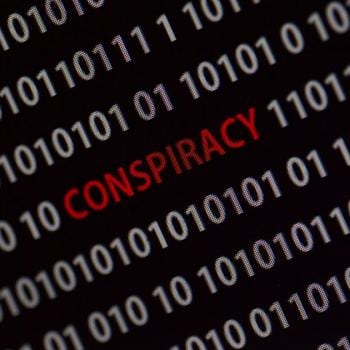In my last post on abortion, I dealt with Judith Jarvis Thompson’s famous Violinist Argument, which is typically regarded as one of the “big guns” of the pro-choice movement. But as I showed, it doesn’t hold up under closer scrutiny, because it depends on an analogy that isn’t analogous to abortion.
Now I’ll turn my attention to a much newer “gotcha” argument that’s become a viral sensation this year. I call it the Burning Fertility Clinic Argument, and as best I can tell, it was invented by author Patrick Tomlinson in a tweetstorm (which you can read in full, here).
Tomlinson seems very impressed with his own argument, boasting “I have a question I’ve been asking for ten years now of the ‘Life begins at Conception’ crowd. In ten years, no one has EVER answered it honestly.” There are, he says, only two possible answers. Picking either of them “destroys” the argument that life begins at conception. What precisely Tomlinson would consider an “honest” answer is notably left vague.
The Choice
Here’s my paraphrase of his purportedly unanswerable scenario:
 You’re in a burning fertility clinic, and burst into a room to see a five-year-old child in one corner crying out for help. In the other corner, you see a container marked “1,000 Viable Human Embryos.” The flames are rising fast and smoke is filling the air. You feel yourself growing weak, and realize you will only be able to save one of these two before losing consciousness. Which do you pick: the five-year-old crying and pleading to be rescued or the 1,000 viable human embryos?
You’re in a burning fertility clinic, and burst into a room to see a five-year-old child in one corner crying out for help. In the other corner, you see a container marked “1,000 Viable Human Embryos.” The flames are rising fast and smoke is filling the air. You feel yourself growing weak, and realize you will only be able to save one of these two before losing consciousness. Which do you pick: the five-year-old crying and pleading to be rescued or the 1,000 viable human embryos?
In Tomlinson’s telling, this is an impossible choice for a pro-lifer to make, because if you believe life begins at conception, and that fertilized embryos are fully human, then the 1,000 embryos must outweigh the life of the five-year-old child. He claims that the pro-lifer instinctively knows which is the right choice–to save the child. But such a choice, he argues, reveals that we really know embryos aren’t human beings, in the same way a child is.
Tomlinson thinks that his scenario “absolutely eviscerates” pro-life principles. It demonstrates that we are frauds and phonies who aren’t really concerned with unborn life, except as a means of controlling women’s bodies. “Slap that big P for ‘Patriarchy’ on [those pro-lifers],” he instructs his followers.
But does his scenario really prove what he thinks it does?
Not even close. His argument turns on two false assumptions which say more about the depth of his own ethical analysis than they do about pro-lifers’ actual priorities. The first false assumption is that the act of choosing between a child and a box of embryos reflects a person’s beliefs about the humanity of either. Debunking this is as simple as replacing the characters in Tomlinson’s scenario.
Recasting the Characters
Let’s imagine that instead of a five-year-old child and a box of embryos, the choice you face when you burst into the burning room is between your mother and your own child. You can only save one. What do you do? According to Tomlinson’s “gotcha” reasoning, picking one is tantamount to admitting the non-humanity of the other. If you choose to save your child, you are admitting that you secretly know your mother isn’t human, and vice-versa.
Hopefully, it should be obvious what a non-sequitur this is. We could replace the parties in need of rescue with any set of persons whom we all consider fully human and (hopefully) equally valuable; A terminal cancer patient and a doctor–a rocket scientist and a garbage collector–a boy baby and a girl baby–a black baby and a white baby. In each case, the hard choice of which one to save is not likely a reflection of who the rescuer thinks is more human.
In some cases, it may be random, without any real moral content. You may have looked to your left first, saw the black child, and simply not taken the time to evaluate the crying child on the opposite side of the room before charging in to save the first human being you saw. In other situations, the choice could be motivated by utilitarian concerns. Will the doctor be more likely to save lives in the future than the terminal cancer patient? Does the rocket scientist have a prospect for a better life than the garbage collector? These questions may sound crass, and even asking them may involve playing God in a way Christian ethicists would reject, but they don’t necessarily say anything about the perceived value of the persons in the burning fertility clinic as persons–in other words, as equally human members of the species. Such choices certainly don’t by necessity make any of them non-persons in the eyes of the rescuer.
More likely, the choice to save the five-year-old over the embryos (which I think any decent person would make) is a simple matter of triage: How can you best allocate scarce, life-saving resources (in this case your time, breath, and strength) when demand is higher than supply? Who has a better chance of survival–the child, or the embryos, once removed from electrical refrigeration? Alternately, which has a higher chance of surviving the fire–the exposed child, or the embryos in aluminum or steel containers?
Doctors and other healthcare providers make agonizing choices like this every day when patients enter the emergency room in various states of injury or illness. They must weigh the urgency of the patient’s condition against the likelihood that immediate intervention will succeed. Who gets the single bag of blood for a transfusion–the person whose arm was amputated in a car accident but is stabilizing, or the person whose heart was perforated in a gas explosion and will not likely survive the night? Paramedics and nurses must make split-second decisions that often result in death, but no one suggests they’re making assessments about the humanity of patients. How silly!
The Answer Is Obvious
This leads to the second false assumption in Tomlinson’s argument: He assumes that there is no possible reason for choosing the five-year-old over the embryos that does not reflect a super-secret, unspoken pro-life understanding that embryos are not really human in the same way a little girl or little boy is. But this, again, is nonsense. Other than triage and utilitarian concerns about a person’s likelihood of contributing to the welfare of others, there are a host of reasons to choose a single five-year-old child over a thousand, ten thousand, or even a million viable embryos.
A child has a nervous system, consciousness, and the ability to suffer tremendous pain. Embryos do not. Would Tomlinson save a screaming child, or her unconscious brother on the other side of the room? When he makes the obvious choice (to save the child who is still conscious), we might just as easily claim to have nailed him to the wall on the humanity of unconscious children. Again, how silly.
A five-year-old also likely has human connections–family that loves him or her, and whose members would be devastated to lose their child. Such a person is rooted in this world in a way embryos simply are not. These tiny lives–as fully human as they are in their earliest stages of development–lack all immediate capacity to suffer emotional loss or grief, and also lack connections with family members who would suffer loss or grief at their demise, at least in the way the family members of the five-year-old would. These considerations can easily outweigh the case for saving the embryos, without changing in the least the biological fact that embryos are fully and uniquely human from the moment of conception.
We might even take it one step further by considering the spiritual and emotional welfare of the rescuer. While it may cause a pro-lifer considerable distress to leave tiny but unique human individuals behind in the burning clinic, it surely pales in comparison with the lifelong guilt and agony that would result from having heard the screams of a dying child and left him or her behind. We rightly and naturally feel great compassion for human persons whose faces we can see, whose voices we can hear, whose eyes can lock with ours in a plea for help. Acting on these signals and this natural empathy is a deep part of being human. It is a good instinct which we should almost never fight. Doing so could arguably rob us of something important about our own humanity. But again, obeying such altruistic urges says nothing about the point at which embryos become human.
Debating Points on the Cheap
Finally, as John Stonestreet notes on The Point, Tomlinson’s scenario fails as a “gotcha” argument for abortion because,
…it isn’t analogous at all to the way unborn human beings are actually killed these days. They don’t die in tragic accidents; they’re intentionally killed by doctors and pharmacists, in the name of reproductive freedom. All Tomlinson’s scenario proves is the fogginess of pro-choice thinking.
In the end, the Burning Fertility Clinic Argument, as popular as it has become in recent weeks, is no stronger than the Violinist Argument. As one commenter on my Facebook page put it, the whole scenario and Tomlinson’s use of it are “glib and tendentious”:
“In our broken world,” wrote this commenter, “we will sometimes be confronted with dilemmas in which all available options are tragic.” Such “gotcha” arguments are,
…a kind of affront to the memory of people like Miep Gies, Corrie ten Boom, Chiune Sugihara, Maria Skobtsova, Oskar Schindler, etc. That is to say, to real people who strove to save real human beings from decidedly non-hypothetical disaster, but who had limited time, power, and resources at their disposal, and so had to make exactly the kind of terrible choices that the scenario treats in such a facile manner for the sake of scoring debating points on the cheap.
Like the other “big gun” of the pro-choice movement, the Burning Fertility Clinic Argument ultimately fails to prove what it sets out to prove: that the unborn are so much cellular flotsam to be discarded at our convenience, and that those who care about the ethics of treating human life so callously are really out to control women. Such arguments, when exposed to scrutiny and commonsense, go up in flames.
Image: iStock Photos












